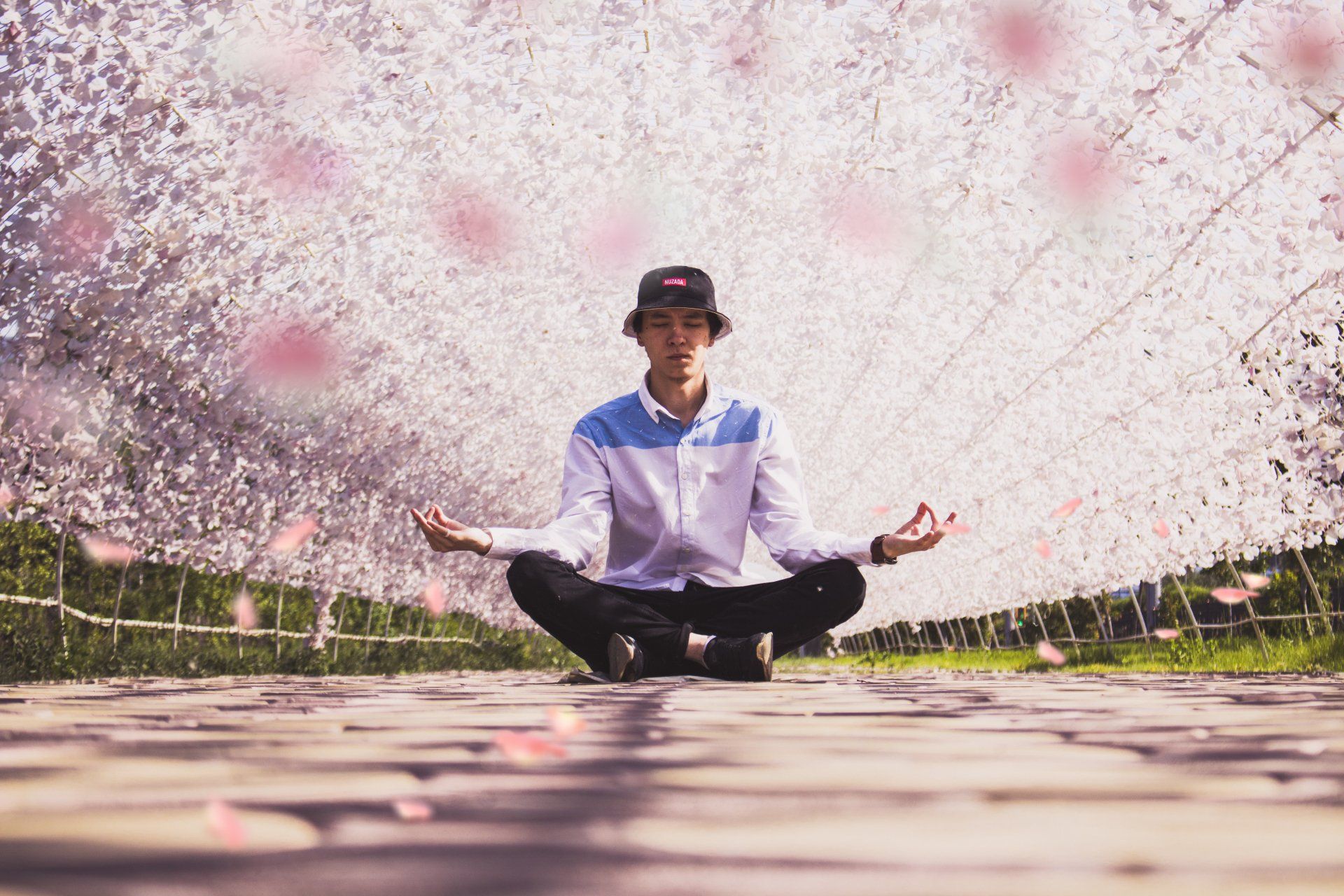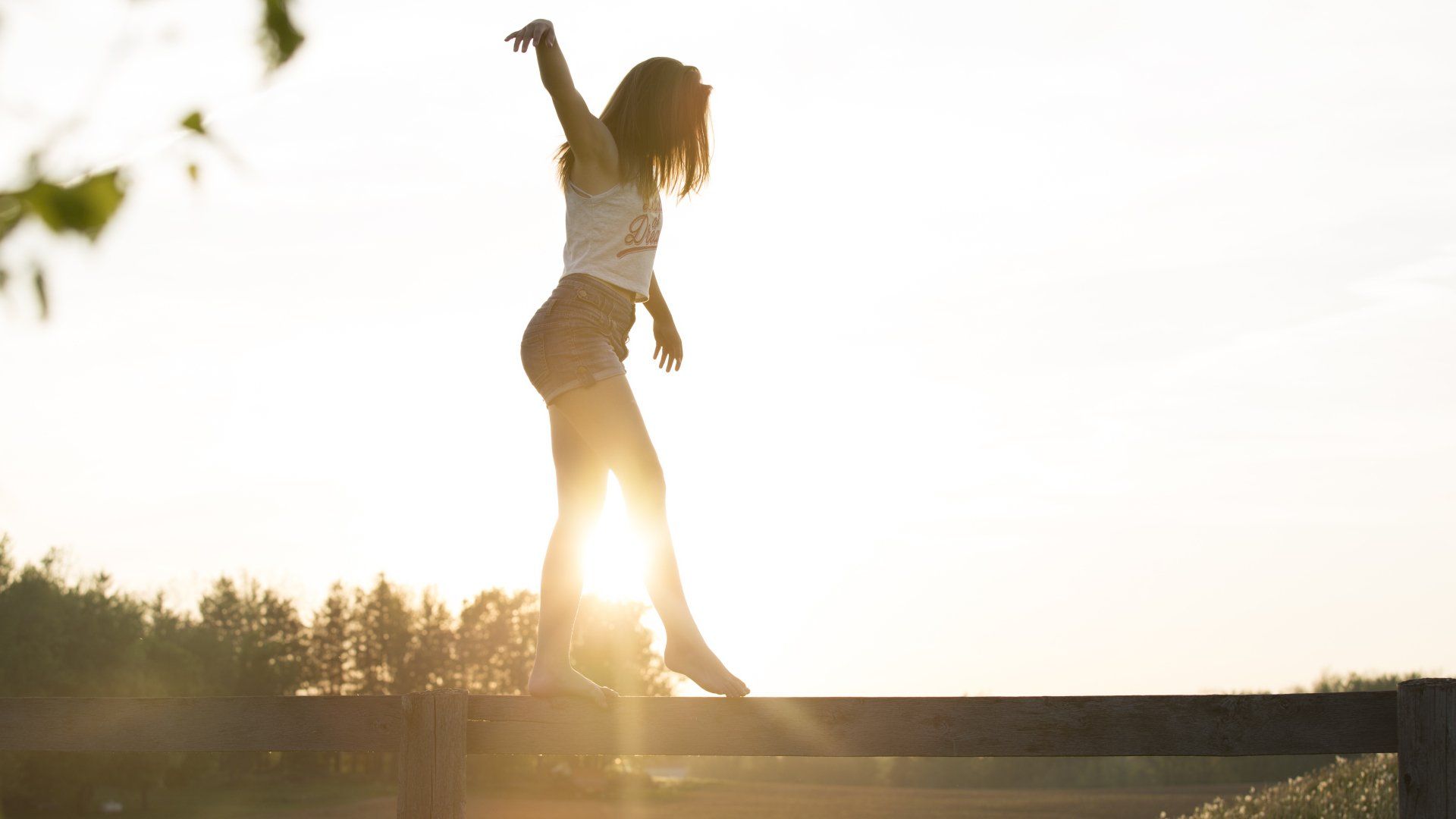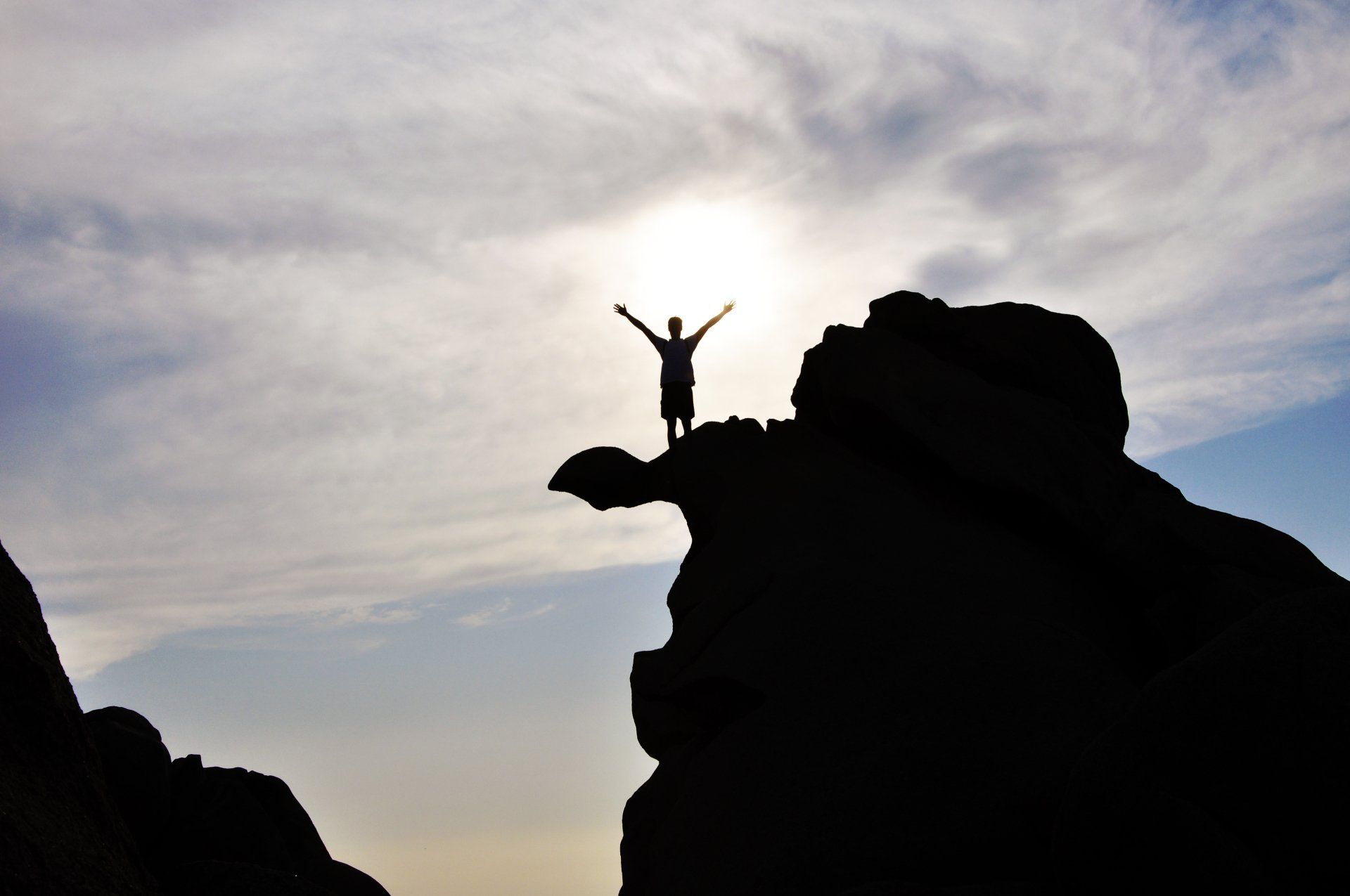Yoga for men
Why it just makes sense

With this month’s Movember and today’s International Men’s Day bringing our attention to men’s mental and physical health, my mind goes to the topic of Yoga for men. Since the beginning of my career as a Yoga teacher, sharing this practice with more men has been a goal of mine. I was (and still am) very aware of the lack of balance in most Yoga classes where the majority of students were and still are usually women. As a Yoga teacher and studio founder and manager, I wondered how we could reach the other half of our potential client base more successfully. What was stopping men from crossing the threshold of a Yoga studio in the same number as women?
Yoga began in India as a men-only practice. Despite this beginning, as Yoga moved to the West, it became and still remains a female dominated environment. Recent stats show the Yoga Gender Gap to be consistent in several countries. Data from Statista’s Global Consumer Survey (April 2021-March 2022) shows that out of all respondents in the UK, 32% of women and only 8% of men occasionally practiced Yoga or Pilates. Similarly in the US, the percentages were 30% and 11% respectively. India was the only country showing a more balanced attendance amongst both groups as 31% and 24%, possibly due to Yoga being deeply rooted in the culture.
My experience of talking to men about Yoga when I first started teaching over 10 years ago was that many were still concerned about Yoga not being relevant to them. Some often mentioned not being flexible enough as their reason for not trying Yoga. I find that the lack of flexibility being a problem preventing class attendance is still a widely spread misconception and not exclusively amongst men. One of the “side effects” of a regular yoga practice is indeed increased flexibility, which is not necessarily a requirement to step on the Yoga mat in the first place. It’s like saying one is too dirty to take a shower. One takes a shower to become clean as one goes to Yoga to become more flexible (in body and mind I'd like to add, but this is a topic for another article).
Yoga is for men and there is evidence of this. If we look at some of Yoga's most influential and inspirational teachers of recent times, we see most of them are men. Names such as B.K.S. Iyengar, Pattabhi Jois and T.K.V. Desikachar, all responsible for bringing Yoga to the West, can only confirm to the male population that there is a space for them too in the world of Yoga. Andre’ van Lysebeth (1999), a Belgian Yoga teacher with over 50 years of experience, wrote “Anyone (…) can practice Hatha-yoga successfully, for it is not a religion, and it neither demands nor presupposes adherence to any specific philosophy, church or faith. It may be looked upon as a psychosomatic discipline - no more - unique in its kind, unparalleled in its beneficial effects”.
And what about the increased popularity of Yoga amongst athletes and sportsmen around the world? In recent years, international cricket teams such as the Indian and Australian ones, have introduced regular Yoga sessions with some players also engaging the services of a personal Yoga teacher. Yoga is an integral part of the training and recovery of the England Football team who followed the example of Hot Yoga pods for training and recovery adopted by the England Rugby team during the 2019 World Cup in Japan. Moving to the world of tennis, Hot Yoga has also been part of British champion Andy Murray’s training for several years. We could also mention how many martial art studios include Yoga classes in their timetables and how the two practices not only have common roots but also have been elegantly fused together in new styles such as Cameron Shayne’s Budokon.
Why should men practice Yoga?
The question isn’t just about whether men have a place in the Yoga world. It’s most importantly about why they should take the opportunity to make this place their own.
The main reasons why the aforementioned sports professionals and teams have decided to unroll their Yoga mats are to do with improving physical performance, avoiding injury and lengthening their career. Yoga helps keep one’s body young by making it strong and supple. The stronger the muscles, the more powerful a bowler’s throw can be. The better the muscle condition, the quicker the reaction time to get to that ball on the tennis court. The greater the flexibility and agility, the faster a footballer can run across the pitch.
Yoga builds simultaneously flexibility and strength through holding poses whilst keeping a steady and relaxed breath. This involves a kind of integrated movement so that whilst a set of muscles is stretched, the opposite set is worked and core/stabilising muscles are engaged to hold the pose. Long and toned muscles are believed to have better blood flow and therefore increased oxygen supply for healing and growing in addition to more efficient lactic acid removal. Flexible muscles allow for a wider range of movement at the joints, which decreases risk of injury and increases the power of one’s movements (this equals to better performance in sports and a functional and healthy body in everyday life).
The life of a professional sportsman can be stressful for the mind as well as the body due to the extremely demanding training and rigorous lifestyle to stay in top condition. In addition to this, there is the pressure of competitions. Yoga’s relaxation, concentration and meditative practices can assist athletes in effectively managing stress levels and in maintaining a strong and calm mind when facing a difficult match or a gruelling training session.
“What’s in it for me?”
At this point the men whose jobs don’t involve kicking or throwing a ball in front of millions could be asking themselves why Yoga is relevant to their lives. Here it’s worth reminding men who practice sports or take part in any other kind of recreational fitness activity that, even though they are not professionals, they’re still at risk of injury. The concept of “weekend warrior” is widely known amongst physiotherapists and sports therapists who often count amongst their clients, recreational sports players whose injuries are usually caused by lack of preparation and conditioning. Therefore, the attitude “If it’s good enough for Murray, etc… it’s good enough for me” should apply.
Sports performance and injury prevention aren't the only reasons that should attract men to Yoga. Research shows that cardiovascular diseases (CVD) such as ischemic heart disease and stroke, are the leading causes of death in the male (and female) population worldwide. The exact causes of CVD aren’t always clear, but there are many factors that can increase one’s risk of developing it. These are high blood pressure/hypertension, inactivity, smoking, high cholesterol, diabetes, being overweight or obese, family history of CVD, ethnic background (in the UK, CVD is more common in people of south Asian and an African or Caribbean background), age (CVD is most common in people over 50), gender (men are more likely to develop CVD at an earlier age than women), diet and an excessive alcohol consumption.
A reassessment of food and drink consumption with the help of a professional is always a good place to start as well as a more holistic change in lifestyle. Cardiovascular exercise can be beneficial too especially to help lose extra weight and lower blood pressure. A well balanced Yoga class can complement other forms of exercise to stretch and condition the body, avoid injury and improve performance. With the addition of some faster paced vinyasas (sequences of poses suck as the sun salutation) a Yoga class could also provide a complete workout in itself, including cardiovascular exercise and stretching. If we consider that CVD has also been linked to chronic stress, the practice of relaxation, concentration and meditation can benefit students by giving them practical tools with which to face the pressures of life more successfully. In addition to that, the adoption of a healthier lifestyle can also help decrease the risk of cancer. This is particularly important when considering that the leading cause of cancer deaths in men is due to lung and prostate cancer.
Research also has shown that men are three to four times more likely to commit suicide than women. This has been put this down to a number of reasons. One is that men are less likely to open up to friends or doctors about mental health issues. Men also tend to show symptoms of depression differently from women which can lead to a missed diagnosis. To cope, they may turn to semi-socially acceptable behaviours like drinking, watching too much TV, and aggressive behaviour which are too often dismissed as “normal” male behaviour rather than a warning sign. Finally men’s suicide attempts are often more violent and therefore more effective in their aim before anyone can intervene.
Yoga is widely recognised as a successful modality in assisting people affected by depression and other mental health issues. The practices of breathing and meditation together with physical postures can help calm and settle the mind, reduce stress and encourage a more positive and focused outlook. Basically, Yoga, as an adjunct therapy to other mental health support and the adoption of healthier lifestyle habits, can be a useful tool in the treatment and prevention of mental health issues and a number of physical diseases in men.
What can we do to get more men on the mat?
I wondered if there was a solution to this when I was setting up my studio. I remember asking myself when I last saw a man on the front cover of a Yoga magazine. I regret to say that, to date, the prevalent image on most Yoga publications and advertising is still that of a woman. How can a man associate himself with Yoga when most of the images relating to this practice are of blissfully smiling ladies stretched in impossible postures on pink mats? I’d like to add that this stereotypical image of the “ideal” Yoga student has at times also put me and other female students off.
Some years ago, I gave some business cards to a friend, asking him if he could hand them out to his clients. He was a self-employed gardener and therefore got in touch with a variety of different people every day. His answer was “Of course I can! I see a lot of old ladies during my work!” I was left speechless…his words reminding me that we still had a long way to go to show the world the innate inclusivity of Yoga. Fast forward to now, more than 10 year later, and I can say that although the aforementioned statistics don’t sound very promising and still show a considerable Yoga Gender Gap, I have attended many Yoga classes where the male participants were in higher numbers than females. I think the trend is changing, albeit slowly.
I have taught Yoga to men and realised that even the keenest ones have at times felt like the odd ones out. Our job as Yoga teachers is to support these brave men who have the courage to step out of their comfort zone and into the Yoga room and who aren’t afraid to come face to face with other people’s misconceptions or their own inner critic. The longer lasting change usually happens slowly, like the work of a wave smoothing a rock. Each man in our Yoga class is the next wave, hopefully bringing others after him.
Disclaimer: The author assumes no responsibility for the topicality, correctness, completeness or quality of information provided. This article is not intended as medical advice. Readers should consult their medical professional before making any changes to their lifestyle, including but not limited to diet and physical activity and exercise.
© 2022 Lucia Micheluzzi © 2022 Healing Movement - all rights reserved
References:
Cancer research UK (2022) ‘Cancer mortality for common cancers’, available at https://www.cancerresearchuk.org/health-professional/cancer-statistics/mortality/common-cancers-compared
Capouya, J. ‘Real men do Yoga’ 2003, HCI, Florida, U.S.A.
Cunningham, S. (2021) ‘Euro 2020: England players relax in specialised Yoga pods to help deal with heat of battle’, Inews, 21 June, available at https://inews.co.uk/sport/football/euro-2020-england-gareth-southgate-hot-yoga-pods-1054982
Devi, I. ‘Forever young, forever healthy’ 1955, A. Thomas & Co, UK
Fleck, A. (2022) ‘International Yoga Day – Who’s practicing Yoga?’, Statista Blog, 21 June, available at https://www.statista.com/chart/27653/yoga-men-and-women-by-country
Mesure, S. (2013) ‘The the to Murray’s success: Hot Yoga!’, The Independent, 27 January, available at https://www.independent.co.uk/sport/tennis/the-key-to-murray-s-success-hot-yoga-8468368.html
NHS (2022) ‘Cardiovascular disease’, available at https://www.nhs.uk/conditions/cardiovascular-disease/
Schumacher, H. (2019) ‘Why more men than women die from suicide’, BBC, 18 March, available at https://www.bbc.com/future/article/20190313-why-more-men-kill-themselves-than-women
The Minded Institute (2022) ‘Yoga for depression’, available at https://themindedinstitute.com/yoga-for-depression/
Van Lysebeth, A. “Yoga Self-taught” 1999 Weiser Books, USA
WHO (2020) ‘The top 10 cases of death’, 9 December, available at https://www.who.int/news-room/fact-sheets/detail/the-top-10-causes-of-death






